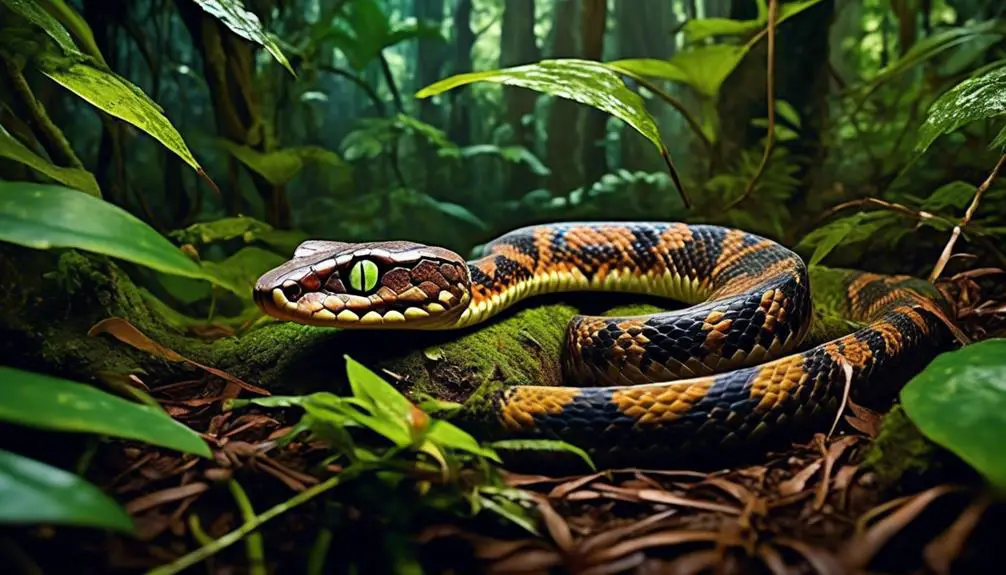Are you prepared to encounter the most dangerous and frightening animals that lurk in the shadows of Costa Rica’s breathtaking landscapes?
Brace yourself for an exploration into the treacherous world of venomous creatures, predatory beasts, and toxic beings that inhabit this Central American paradise.
From the lethal fer-de-lance snake to the elusive bull shark, the dangers that lie ahead will keep you on the edge of your seat.
So, tighten your grip and prepare for a journey that will test your courage and leave you in awe of the untamed creatures that roam this wild land.
Venomous Animals in Costa Rica
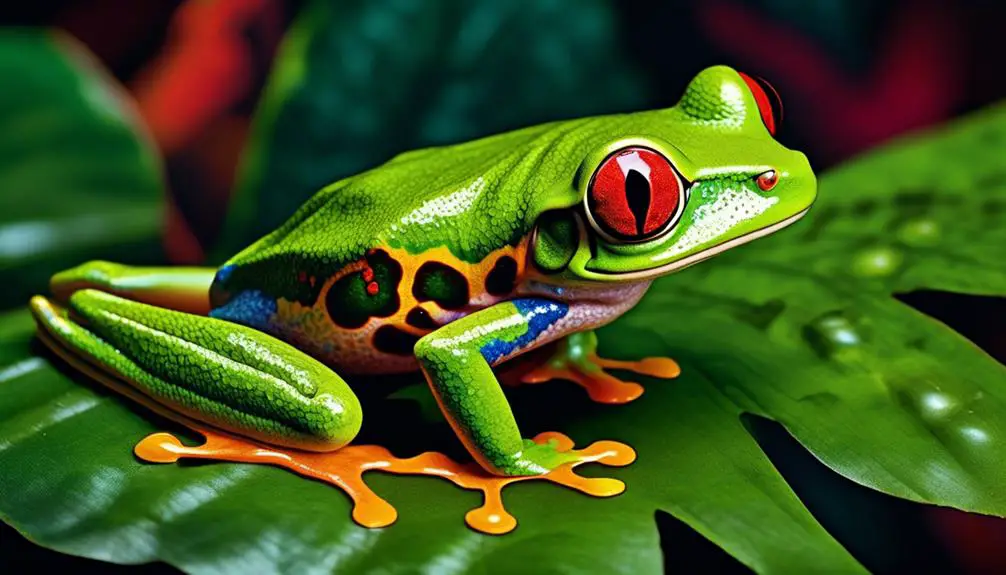
Venomous animals in Costa Rica pose a significant risk to visitors and locals alike. Among these venomous creatures, the bullet ant (Paraponera clavata) stands out. With its venomous sting, encounters with this ant can be painful and potentially dangerous. Treatment for its sting usually involves cold compresses and local treatments to alleviate the pain and swelling. The bullet ant is commonly found at the bases of trees in woodland and rainforest areas.
Another venomous animal to be cautious of is the fer-de-lance snake (Bothrops asper). Its venomous bite can lead to severe symptoms and complications. Immediate medical treatment with antivenom is necessary to prevent further harm. This snake is commonly found in tropical lowland forests in Costa Rica.
The Costa Rican coral snake (Micrurus mosquitensis) is also venomous and should be avoided. Its venomous bite requires antivenom treatment. This snake can be found in humid tropical forests.
The eyelash viper (Bothriechis schlegelii) is another venomous snake in Costa Rica. Its venomous bite can cause serious harm and should be treated with antivenom. The eyelash viper is commonly found in humid tropical forests.
Lastly, the Brazilian wandering spider (Phoneutria) is a venomous creature to be aware of. Its venomous bite can cause discomfort and should be treated with antivenom. This spider is typically found on the forest floor.
Being aware of these venomous animals and understanding their habitats can help minimize the risk when exploring Costa Rica’s diverse ecosystems.
Predatory Animals in Costa Rica
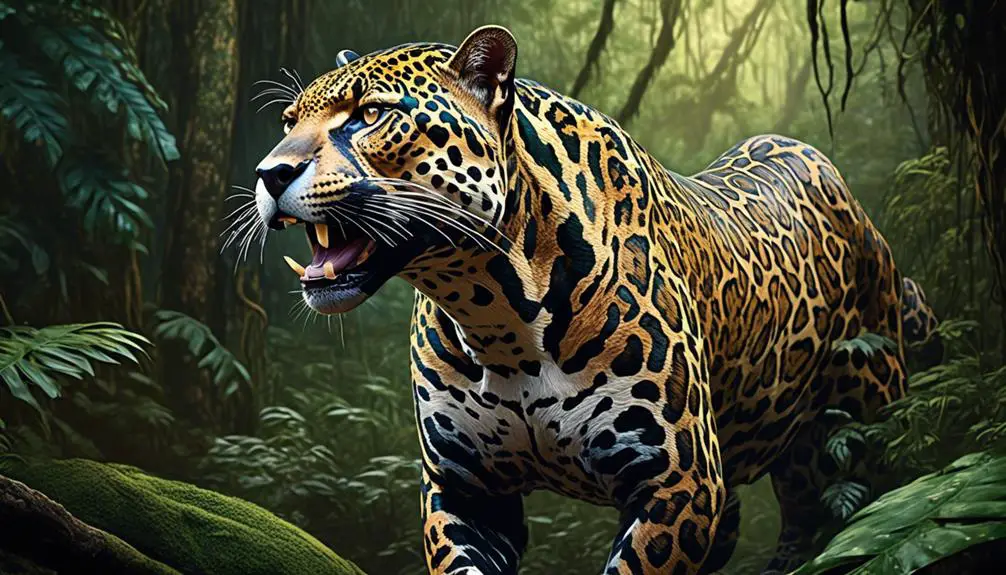
What predatory animals can be found in Costa Rica’s diverse ecosystems?
Costa Rica is home to a variety of predatory animals that inhabit its diverse ecosystems. These animals exhibit predatory behavior, relying on their hunting skills and physical adaptations to capture and feed on their prey.
One notable predatory animal in Costa Rica is the American crocodile (Crocodylus acutus). Found in coastal areas, rivers, and swamps, these crocodiles are known for their predatory behavior. They’re apex predators and can easily overpower their prey with their powerful jaws and strong muscles.
Another predator found in Costa Rica is the jaguar (Panthera onca). These large cats are highly skilled hunters and are capable of taking down a variety of prey, including deer, monkeys, and even caimans. They inhabit forests, swamps, and grasslands, using their stealth and strength to ambush and capture their prey.
In addition to crocodiles and jaguars, Costa Rica is also home to predatory sharks such as bull sharks (Carcharhinus leucas) and tiger sharks (Galeocerdo cuvier). These sharks are known for their predatory behavior in coastal waters, estuaries, and rivers. While shark attacks on humans are rare, it’s important to exercise caution and follow safety guidelines when swimming or diving in these areas.
Toxic Animals in Costa Rica
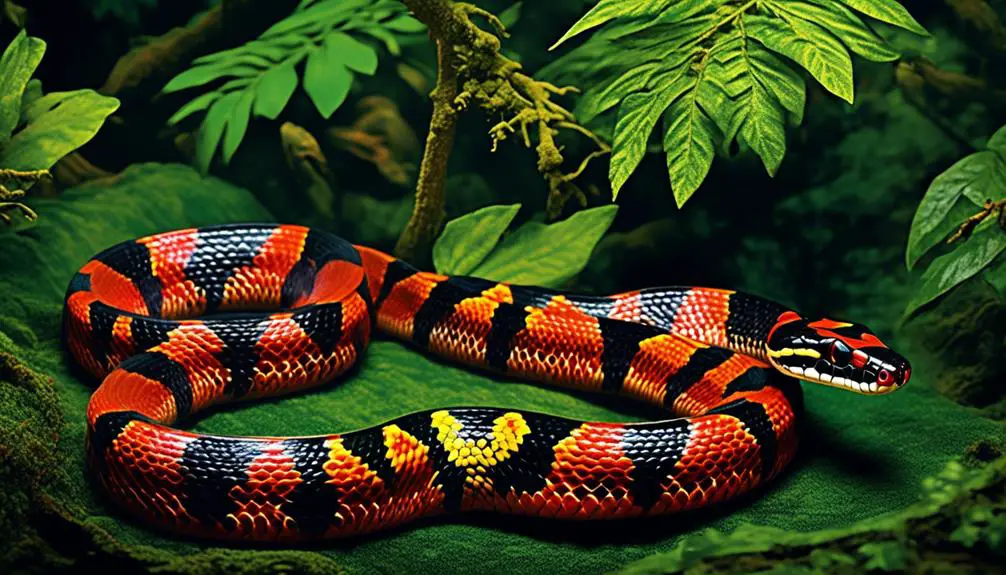
In Costa Rica, there are deadly amphibians and venomous insects that pose a threat to humans.
The three-striped poison dart frog (Ameerega trivittata) is one such amphibian, with toxic skin secretions.
On the other hand, the ferocious water bug (Belostomatidae) is an example of a venomous insect that can deliver a painful bite.
Understanding the dangers associated with these toxic animals is crucial for visitors to Costa Rica to ensure their safety.
Deadly Amphibians
One of the noteworthy groups of dangerous animals found in Costa Rica are the amphibians, which include several deadly species with toxic skin secretions. These toxic amphibians are known for their vibrant colors, serving as a warning to potential predators. The table below provides information on three of the most deadly amphibians in Costa Rica:
| Amphibian | Scientific Name | Toxicity |
|---|---|---|
| Poison dart frog | Ameerega trivittata | Highly toxic |
| Green and black poison frog | Dendrobates auratus | Toxic |
| Red-eyed tree frog | Agalychnis callidryas | Mildly toxic |
These amphibians possess potent toxins that can cause severe harm or even death if ingested or touched. It is essential to exercise caution and avoid direct contact with these amphibians while exploring the rainforests of Costa Rica. Conservation efforts are crucial in protecting these fascinating yet dangerous creatures and their habitats.
Venomous Insects
Continuing our exploration of the dangerous animals in Costa Rica, we now turn our attention to the realm of venomous insects, adding another layer of intrigue and potential risks to the diverse ecosystem of this Central American country.
Costa Rica is home to several venomous insects that can pose a threat to humans. One such insect is the bullet ant (Paraponera clavata), known for its venomous sting. Found in the bases of trees, woodlands, and rainforests, the bullet ant’s sting can cause intense pain and discomfort.
Another venomous insect is the Brazilian wandering spider (Phoneutria), which can be found on the forest floor. Its bite can be dangerous and requires antivenom treatment.
It’s important to exercise caution and be aware of these venomous insects when exploring the natural wonders of Costa Rica.
Most Dangerous Animals in Costa Rica
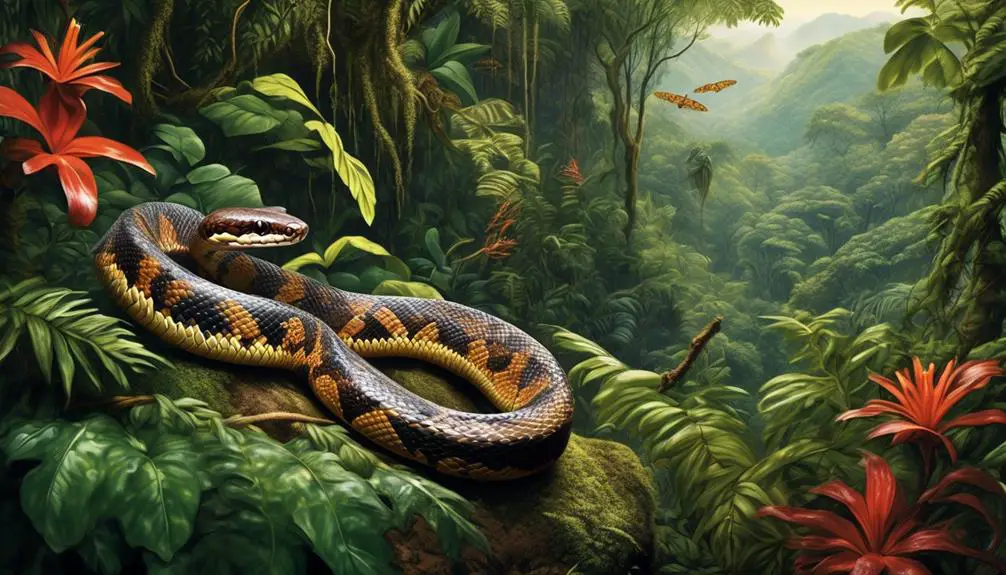
The fer-de-lance snake (Bothrops asper) stands out as the most dangerous animal in Costa Rica, with its venomous bite causing severe symptoms and complications. This highly venomous snake is responsible for a significant number of snakebite incidents and hospitalizations in the country. Immediate medical treatment with antivenom is necessary to counteract the effects of the venom. While fatalities from fer-de-lance bites are rare, they can occur if left untreated.
To provide a comprehensive understanding of the dangerous animals in Costa Rica, below is a table outlining the various venomous, predatory, and toxic animals found in the country:
| Category | Animal | Attacks | Treatment | Habitat | Conservation Status |
|---|---|---|---|---|---|
| Venomous Animals | Bullet ants (Paraponera clavata) | Venomous sting | Cold compress and local treatments | Bases of trees, woodland, rainforest | Least Concern |
| Fer-de-lance snake (Bothrops asper) | Venomous bite | Antivenom | Tropical lowland forests | Least Concern | |
| Costa Rican coral snake (Micrurus mosquitensis) | Venomous bite | Antivenom | Humid tropical forest | Least Concern | |
| Eyelash viper (Bothriechis schlegelii) | Venomous bite | Antivenom | Humid tropical forest | Least Concern | |
| Brazilian wandering spider (Phoneutria) | Venomous bite | Antivenom | Forest floor | Least Concern | |
| Black widow spider (Latrodectus mactans) | Venomous bite | Antivenom | Dark, secluded areas | Least Concern | |
| Costa Rican rattlesnake (Crotalus simus) | Venomous bite | Antivenom | Dry forests, savannas, and grasslands | Least Concern | |
| Central American bushmaster (Lachesis stenophrys) | Venomous bite | Antivenom | Rainforests and cloud forests | Least Concern | |
| Predatory Animals | American crocodile (Crocodylus acutus) | Predatory behavior | N/A | Coastal areas, rivers, and swamps | Least Concern |
| Jaguar (Panthera onca) | Predatory behavior | N/A | Forests, swamps, and grasslands | Near Threatened | |
| Bull sharks (Carcharhinus leucas) | Predatory behavior | N/A | Coastal waters, estuaries, and rivers | Near Threatened | |
| Tiger shark (Galeocerdo cuvier) | Predatory behavior | N/A | Coastal waters, reefs, and open ocean | Near Threatened | |
| Toxic Animals | Three-striped poison dart frog (Ameerega trivittata) | Toxic skin secretions | N/A | Tropical rainforests | Least Concern |
| Ferocious water bug (Belostomatidae) | Bite | Hospital attention | Freshwater habitats | Least Concern | |
| Poisonous dart beetle (Phyllobates terribilis) | Skin contact | Hospital attention | Rainforests | Least Concern |
It is important to be aware of these dangerous animals before visiting Costa Rica. Proper precautions and knowledge can help minimize the risks associated with encounters. Conservation efforts are also in place to protect these species and their habitats.
Most Dangerous Animal: Fer-de-lance Snake
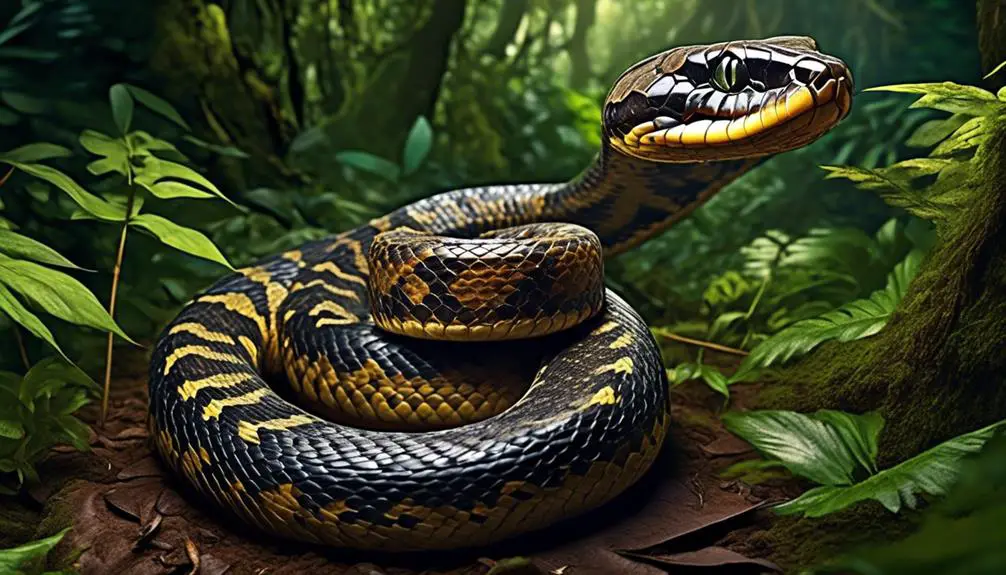
The fer-de-lance snake, deemed the most dangerous animal in Costa Rica, possesses a venomous bite that can lead to severe symptoms and complications. This highly venomous snake, scientifically known as Bothrops asper, is responsible for a significant number of snakebite incidents and hospitalizations in the country.
The venom of the fer-de-lance snake contains a potent combination of toxins, including hemotoxins and necrotoxins, which can cause tissue damage, bleeding, and organ failure. The severity of the symptoms depends on the amount of venom injected and the location of the bite. Immediate medical treatment with antivenom is necessary to counteract the effects of the venom and prevent further complications. While fatalities from fer-de-lance bites are rare, they can occur if left untreated.
The fer-de-lance snake is typically found in tropical lowland forests, where it hunts for prey, such as rodents and amphibians. Its distinctive triangular-shaped head and camouflaged coloration make it a stealthy predator. It’s important to exercise caution and be aware of the presence of the fer-de-lance snake when exploring the natural habitats of Costa Rica.
Most Dangerous Snake in Costa Rica
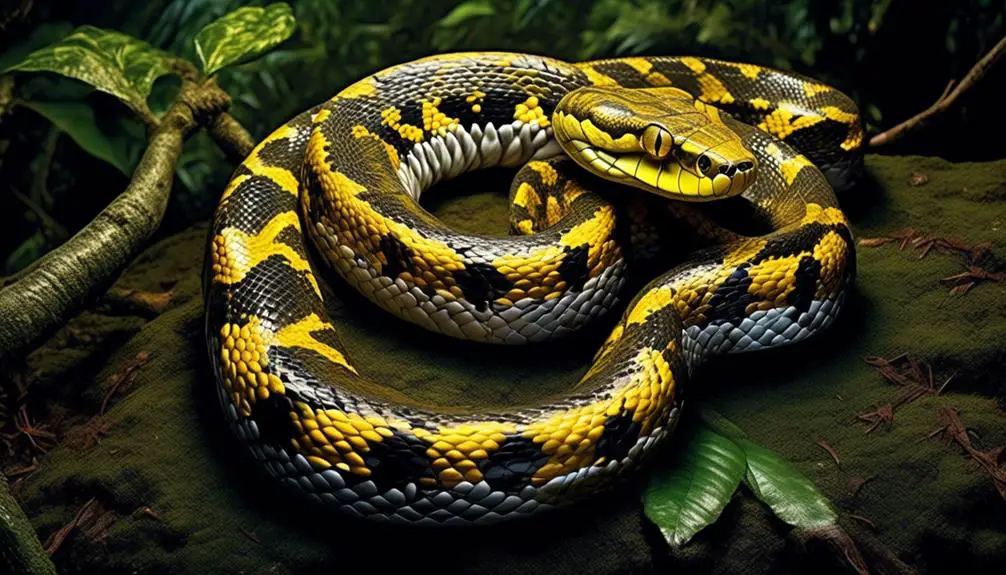
Considered the most perilous reptile in Costa Rica, the fer-de-lance snake (Bothrops asper) poses a significant threat with its venomous bite and is responsible for nearly half of all snakebite incidents in the country.
This highly venomous snake is a member of the pit viper family and is known for its aggressive behavior. It can reach lengths of up to six feet and has a thick, stocky body. The coloration of the fer-de-lance varies, ranging from brown to gray with darker markings.
Its venom contains a potent mix of enzymes and toxins that can lead to tissue damage, severe pain, swelling, and even death if left untreated. Immediate medical treatment with antivenom is crucial in order to counteract the effects of the venom. Despite the high number of snakebite incidents, fatalities from fer-de-lance bites are rare due to the availability of antivenom and prompt medical care.
However, it’s important to exercise caution and avoid interacting with these dangerous snakes in order to prevent unnecessary encounters and minimize the risk of snakebite incidents.
Sharks in Costa Rica
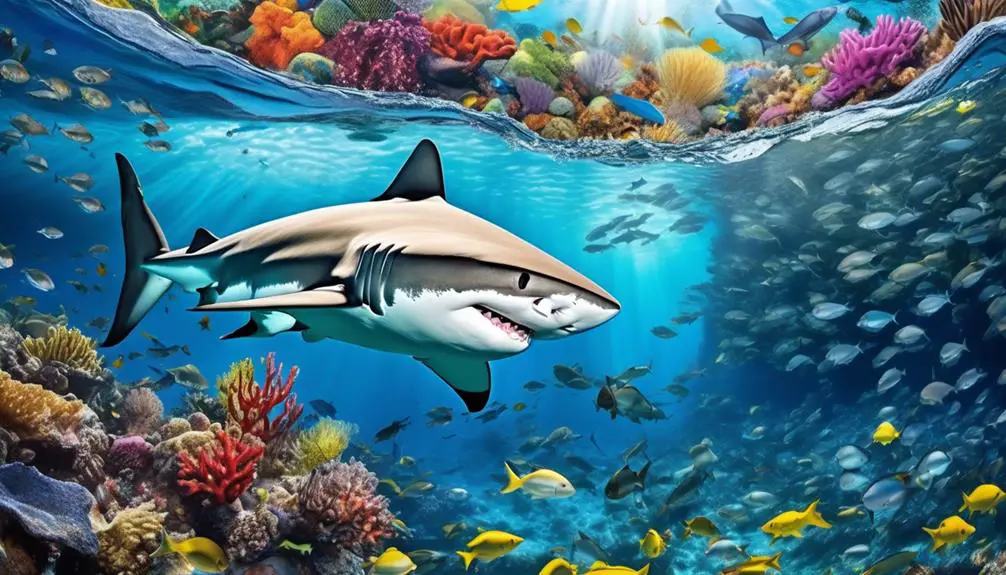
Sharks in Costa Rica can be found in the coastal waters, and they’re known for their predatory behavior. Two species of sharks that are present in these waters are the bull shark (Carcharhinus leucas) and the tiger shark (Galeocerdo cuvier). These sharks have adapted to their marine environment and possess unique characteristics that make them efficient hunters.
The bull shark, also known as the ‘Lake Nicaragua shark,’ is a formidable predator. It can tolerate both freshwater and saltwater environments, allowing it to venture into estuaries and rivers. This adaptability increases the chances of human-shark encounters in areas where people engage in water activities.
Tiger sharks, on the other hand, are known for their impressive hunting skills. They possess powerful jaws and serrated teeth that allow them to efficiently capture and consume their prey. Tiger sharks are opportunistic feeders and have been known to consume a variety of marine animals, including sea turtles, seals, and even other sharks.
Although shark attacks on humans in Costa Rica are rare, it’s important to exercise caution and follow safety guidelines when swimming or diving in their habitat. Avoiding areas where sharks are known to frequent, such as river mouths and murky waters, can help minimize the risk of an encounter.
Conservation efforts in Costa Rica aim to protect shark populations and their habitats. These efforts include the establishment of marine protected areas and the promotion of sustainable fishing practices. By safeguarding these apex predators, we can maintain the delicate balance of the marine ecosystem in Costa Rica.

Erzsebet Frey (Eli Frey) is an ecologist and online entrepreneur with a Master of Science in Ecology from the University of Belgrade. Originally from Serbia, she has lived in Sri Lanka since 2017. Eli has worked internationally in countries like Oman, Brazil, Germany, and Sri Lanka. In 2018, she expanded into SEO and blogging, completing courses from UC Davis and Edinburgh. Eli has founded multiple websites focused on biology, ecology, environmental science, sustainable and simple living, and outdoor activities. She enjoys creating nature and simple living videos on YouTube and participates in speleology, diving, and hiking.

